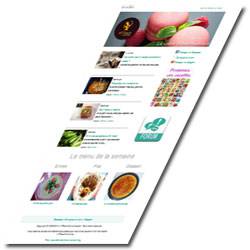



Second and last part of our report on coffee and still based upon documents forwarded by Mr Rocher, we now focus on aroma and tasdte of the coffee...
In case you missed the fist part, click on the following link :
Coffee, choosing and preparing.
What is more depressing than never seeing what we will absorb ; but the look, the sense and the taste of coffee, this wonderful adequacy allows it because the taste of coffee is really an association with colour, smell and texture.
What is the pleasure of a geniune ritual of the preparation of a coffee ?
Receiving, when the coffee beans are getting grounded, all these fragrances and wonderfull aromatic smells of the coffee.
Getting all those fragrances that fill the air, during the preparation of a coffee through a Cona or an elctric coffee maker. All of this make the true path of the preparation of a coffee because we must know how to touch it, look at it, find the right quantity needed ans smell it in order to appreciate its aroma during all these steps and finally get confirmation of its quality in your nose and mouth. This is the true pleasure of all these assoiciations that help us and bring us to satisfaction of the tasting of the coffee :
Tasting:
This is a technique that allows the evaluation of the profile of the flavour of a coffee, the identification of all its features. It is important for the creation of coffee blends, i.e. the art of fusion of different coffee origins in order to compose an harmonic, balanced and aromatic blend.
The tasting of a coffee uses most of the
senses : view, touch, smell and taste. The view gives you information about the freshness and homogeneity of the coffee ; the touch about te granulometry and quality of the coffee bean ; the smell of a coffee is a multiple step exercise, giving you information about the green coffe (before roasting), then on the dragree of grounding in order to catch intensity and aroma of the coffee. Then the taste, during the infusion step, describes the family of the various aromas you perceived.
Tasting Methodology :
Tasting operates by strongly and fastly(and with noise) breathing in a sip of coffee. This creates a steaming of the coffeee that will sensitize and exite the taste buds of the tongue.
So, we will first identify the basic savours of the coffee (sugar, acidity, bitterness), then the middle part of the tongue will measure its granulometry, its texture and its smoothness that is translated in terms of strenght.
At last, the aroma will step back internally following a rear-nose path to give us the "intense aromatic persistancy". For the amateur connoisseur who wants to make progress, the language of tasting will first have to be basic and clear using few descriptive words for a simple analysis of the coffee.
b>Strenght : texture of the beverage when immediately in the mouth.
Acidity : sharp feeling is desired expecially for the high grown ARABICA coffees
Bitterness : often rejected because received as a negative taste but always there in the coffee : very light and harmonious in Arabica coffee ans stronger in Robusta coffee.
Aroma : received backwards through the nose, aromas are in general :
- strong but ordinary in Robusta
- subtle and fine in Arabica
Aromas wheel :
document cannot be translated for technical reasons
Food/Coffees harmonies
Now an exceptional document (cannot be translated for technical reasons)in order to choose the most suitable coffee in accordance with your meal
Food/Coffee harmonies
And for the end, as usual, a recipe from chef Patrick Asfaux to practice the above

